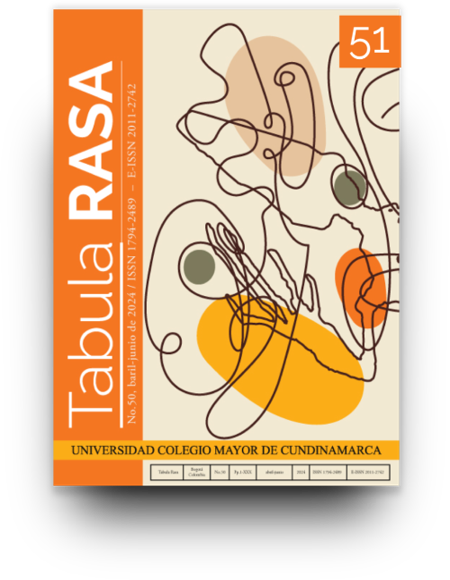Dangerous Instincts: Foucault, Criminality, and Animals
Instintos peligrosos. Foucault, criminalidad y animales
Show authors biography
This article analyzes, from a Foucaldian anti-speciesist approach, historic articulations between animalizing criminality and criminalizing animals. To do this, we will follow this path: first, we will review Foucault’s genealogical reconstruction of the “dangerous individual” notion in the 19th century, where instinct appears as an archaic will driving the individual to crime; then, we will explore the emergence in tandem of the problem of animal instinct in raising practices, the maintenance and exploitation of animal races in the 18 to 19th centuries. Finally, we will see how in criminal anthropology, crime is understood as a physiological abnormality traversing the whole animal kingdom. Thus, we will show that power over animal life and punishment power have been linked throughout history on the problem of instinct that puts the species at risk as a biopolitical phenomenon.
Article visits 102 | PDF visits 93
Downloads
- Ahuja, N. (2009). Postcolonial Critique in a Multispecies World. PMLA, 124(2), 556- 563. https://doi.org/10.1632/pmla.2009.124.2.556
- Bierne, P. (1995). The Use and Abuse of Animals In Criminology: A Brief History And Current Review. Social Justice, 22(1), 5-31.
- Bolduc, J.-S. (2013). La théorie des instincts d’Hermann Samuel Reimarus. Dix-huitième siècle, 1(45), 585-603.
- Bonnet, H. & Bulard, J. (2018). Rapport médico-légal sur l’état mental de Charles- Joseph Jouy inculpé d’attentats aux mœurs. En C. Taylor, Foucault, Feminism, and Sex Crimes, An Anti-Carceral Analysis (pp. 237-245). Routledge.
- Buccellati, A. (1884). Dritto et procedura penale. Ulrico Hoepli.
- Cavalieri, P. (2008). A missed opportunity: Humanism, anti-humanism and the animal question. En C. J. Castricano, Animal subjects: an ethical reader in a posthuman world (pp. 97-123). Wilfrid Laurier University Press.
- Chuang, R. (2023). Criminal Beasts’: Metaphors that Reveal Common Oppression to Humans and Animals. Animal Ethics Review, 3(1), 19-28.
- Código Civil de la Ciudad de Querétaro (LX Legislatura 01 de septiembre de 2009).
- Cuvier, F. (1822). Instinct. En Dictionnaire des sciences naturelles. Tome XXIII. F. G. Levrault. D’Addosio, C. (1892). Bestie delinquenti. Luigi Pierro.
- Dorlin, E. (2009). La matrice de la race. Généalogie sexuelle et coloniale de la nation française. La découverte.
- Doron, C.-O. (2013). Biopolítica y zootecnia. Historia y sociedad, 25, 17-43.
- Doron, C.-O. (2011). Races et dégénérescence. L’émergence des savoirs sur l’homme anormal. Paris VII.
- Evans, E. P. (1906). The Criminal Prosecution And Capital Punishment Of Animals. William Heinemann.
- Ferri, E. (1893). La sociologie criminelle. Arthur Rousseau.
- Ferri, E. (1882). Evoluzione dell’omicidio. Archivio di psichiatria, scienze penali ed antropologia criminale, 3, 288-309.
- Foucault, M. (2009). Vigilar y castigar. El nacimiento de la prisión. Siglo XXI.
- Foucault, M. (2007a). El poder psiquiátrico. Curso en el Collège de France (1973-1974). Fondo de Cultura Económica.
- Foucault, M. (2007b). Historia de la sexualidad I. La voluntad de saber. Siglo XXI.
- Foucault, M. (2006). Seguridad, Territorio, Población. Curso en el Collège de France (1977- 1978). Fondo de Cultura Económica.
- Foucault, M. (2001). Los anormales. Curso en el Collège de France (1974-1975). Siglo XXI.
- Foucault, M. (1994). Dits et Écrits III (1976-1979). Gallimard.
- Gonzáles, A. G. & Ávila Gaitán, D. I. (2022). Glosario de resistencia animal(ista). Desde Abajo/Ileca.
- Hribal, J. (2010). Fear of the animal planet : the hidden history of animal resistance. CounterPunch/AK Press.
- Huertas-Díaz, O. (2011). Aproximaciones a la antropología criminal desde la perspectiva de Lombroso. Revista Criminalidad, 53(1), 293-306.
- Irrera, O. (2019). L’empire de l’involontaire et la volonté de n’être pas gouverné. Revista de Filosofia Aurora, 31(52), 224-256. https://doi.org/10.7213/1980.5934.31.052.DS11
- Kreiner, J. (2020). Legions of pigs in the early medieval West. Yale University Press.
- Lacassange, A. (1882). De la criminalité des animaux. La Revue scientifique de la France et de l’étranger: revue des cours scientifiques, 34-42.
- Lombroso, C. (1890). I delinquenti-nati fra gli animali. Fanfulla della domenica, XII(26), 1-4. https://www.romolocapuano.com/wp-content/uploads/2017/10/Lombroso-I-De- linquenti-nati-fra-gli-animali.pdf
- Lombroso, C. (1881). Il delitto negli animali. Archivio di psichiatria, scienze penali ed antropologia criminale, 448-455.
- López Barrios, J. I. (2020a). ¿Hombres o bestias? Poder pastoral, colonialismo y animales. En R. Moreno Badajoz (coord..). Transversalidad y biopolíticas: cuerpos, géneros y saberes (pp. 115-143). Universidad de Guadalajara.
- López Barrios, J. I. (2020b). Pero... ¿pueden resistir? Resistencias animales, relaciones de poder y dominación. Revista Latinoamericana de Estudios Críticos Animales, 7(1), 233-274.
- Lugones, M. (2008). Colonialidad y género. Tabula Rasa, 9, 73-101. https://doi.org/10.25058/20112742.340
- Suárez, L. & Guazo, L. (2005). Eugenesia y racismo en México. Unam.
- Piazzesi, B. (2020). Domesticare gli instinti. Una genealogia del discorso etológico. (Tesis de doctorado en Filosofía). Scuola Normale Superiore.
- Saint-Gervais, A. A. (1835). Les animaux célèbres: anecdotes historiques sur des traits d’intelligence, d’adresse, de courage, de bonté, d’attachement. Tome 1. Librairie De Roret.
- Shukin, N. (2011). Tense Animals: On Other Species of Pastoral Power. CR: The New Centennial Review, 11(2), 143-167.
- Spencer, D. C., & Fitzgerald, A. (2015). Criminology and animality: stupidity and the anthropological machine. Contemporary Justice Review, 18(1), 407-420. https://doi.org/1 0.1080/10282580.2015.1093685
- Vasquez, E. A., Loughnan, S., Gootjes-Dreesbach, E. & Weger, U. (2014). The animal in you: Animalistic descriptions of a violent crime increase punishment of perpetrator. Aggressive Behavior, 40(4), 337–344. https://doi.org/10.1002/ab.21525








